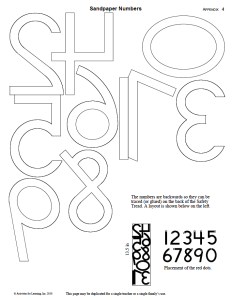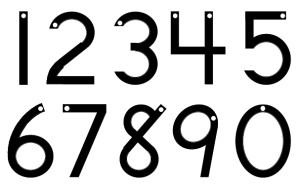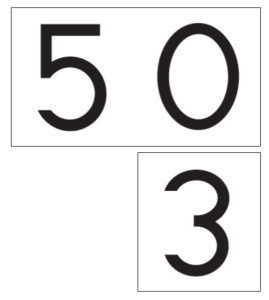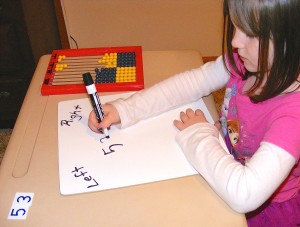Does your child tend to flip and flop their letters and numbers – you know, get them out of order, switch them around, or even write them backward? Both my son and my daughter really struggle with flipping their numbers and letters around. This became a big issue when they were trying to understand and apply place value. Here are a few things I did to help my kids – perhaps it will help yours, too.
All young children, along with many struggling learners, can have a difficult time writing their numbers and letters correctly. My kids frequently would write their letters and numbers backwards. One fabulous resource to help correct their number writing is the song, Writing Numbers on the Yellow Is The Sun CD. If you don’t have the CD, the song is right here.
If you haven’t heard the song and your children are writing their numbers backwards, I encourage you to play and sing the song a couple times a day. Not only is the song catchy, but it can really help your child remember which side to start her numbers.
The song references left and right, but two of my kids struggle with their lefts and rights. So, to overcome this, I would write LEFT on the top left side of the page and RIGHT on the top right side of the page to help them remember which side is which.
Young children, and the struggling learner who still needing some assistance, will benefit from tracing the numbers before they practice writing the numbers. In the back of the Math Card Games book, Appendix page 4, there are Sandpaper Numbers.

These numbers are backwards so they can be traced on the back of sandpaper and cut out, then glued to a piece of cardboard or thin board. Dr. Cotter found that using 3M’s Safety Tread worked best. Dots are added to identify the starting points.

Once we had the written numbers established, we move into writing equations. We would first build the number using the Place Value Cards and say the number out loud (verbal re-enforcement is vital to learning!). Then we would write our numbers on the white board or on a math journal page.
When doing two, three, and four digit numbers, the Place Value Cards are fantastic! Using the cards, combining 50 and 3 as shown here,
there’s no way that 53 can become 35.
The Place Value Cards also reinforce that the 5 in 53 represents 5 tens, not just a 5 that happens to be sitting next to a 3.
I noticed an almost immediate result while doing this next activity to help my son stop verbally flipping numbers. One day, I gave my son a mental math equation. I don’t remember exactly what the equation was, but the answer was supposed to be 37. However, my son answered 73.
In an attempt to figure out if he was yet again flipping his numbers or if he was simply getting the answer wrong, I asked him to show me his answer on the AL Abacus. Immediately, he put 37 beads on the abacus. I asked him what the answer was. He said, “sevent……”. He paused and then confidently said, “Thirty-seven.” From that time on, he rarely verbally flipped his numbers around!
The AL Abacus gave his mind a resource to visualize numbers! Hmmm. Perhaps Dr. Cotter is onto something by using manipulatives to help visualize math!
So, if you have a child who flops and flips, I mean, flips and flops their numbers, why not try these tips to help them work through the struggle?
If you have a ‘flipper-flopper’ in your family and have questions or if you have your own struggling learner ‘tips’, please feel free to email RightStart Math at [email protected]. Perhaps your question will show up on a future blog post!





Oh, what great ideas. Sandpaper would be good for kinesthetic learning (did I spell that right?). 🙂
My granddaughter go is 4 started writing, she interestingly enough can trace letters well but when writes she dis them on their back, for example a capital E would have the three ends point up, an A like it fell over on its side, and letters stacked one on top of the other like the Arabics do reding from top to bottom. Anyone know of this condition?
Hi, Alex. My name is Rachel.
I think at your granddaughter’s age, it is probably a developmental issue. That being said, as your granddaughter writes her letters (and numbers) be sure to discuss where each letter starts. Most written letters starting at the top. For example, when writing the letter ‘A’ guide her to start her letter at the top of the line (be sure to use lined paper) and draw each of the two angled lines from the top. Then she crosses her ‘A’.
Here is a link to a video that teaches how to write letters that you and your granddaughter might find helpful. https://www.youtube.com/watch?v=vsue4unC7YQ
I hope that helps! Of course, if you have any further questions, just let us know.